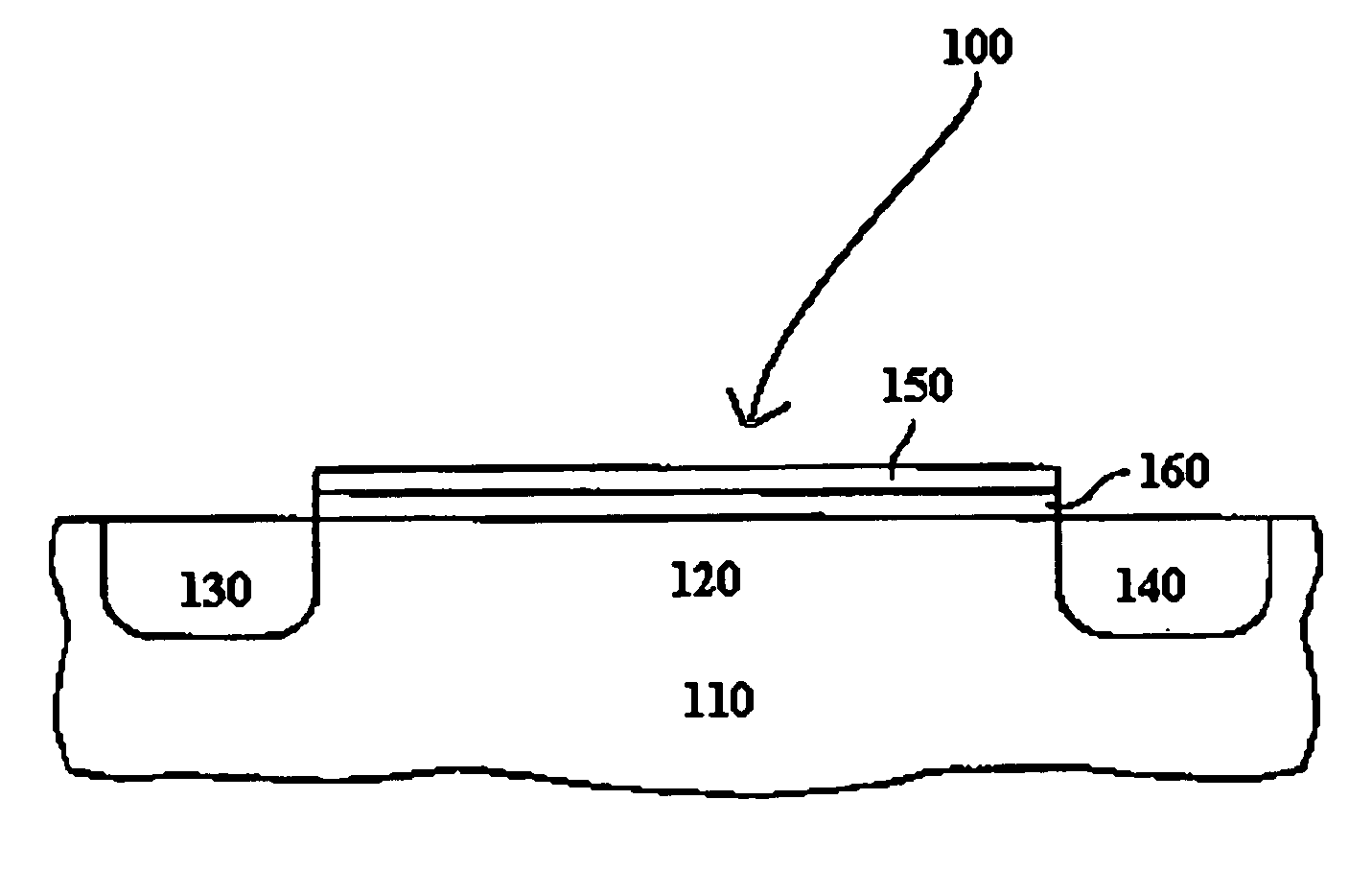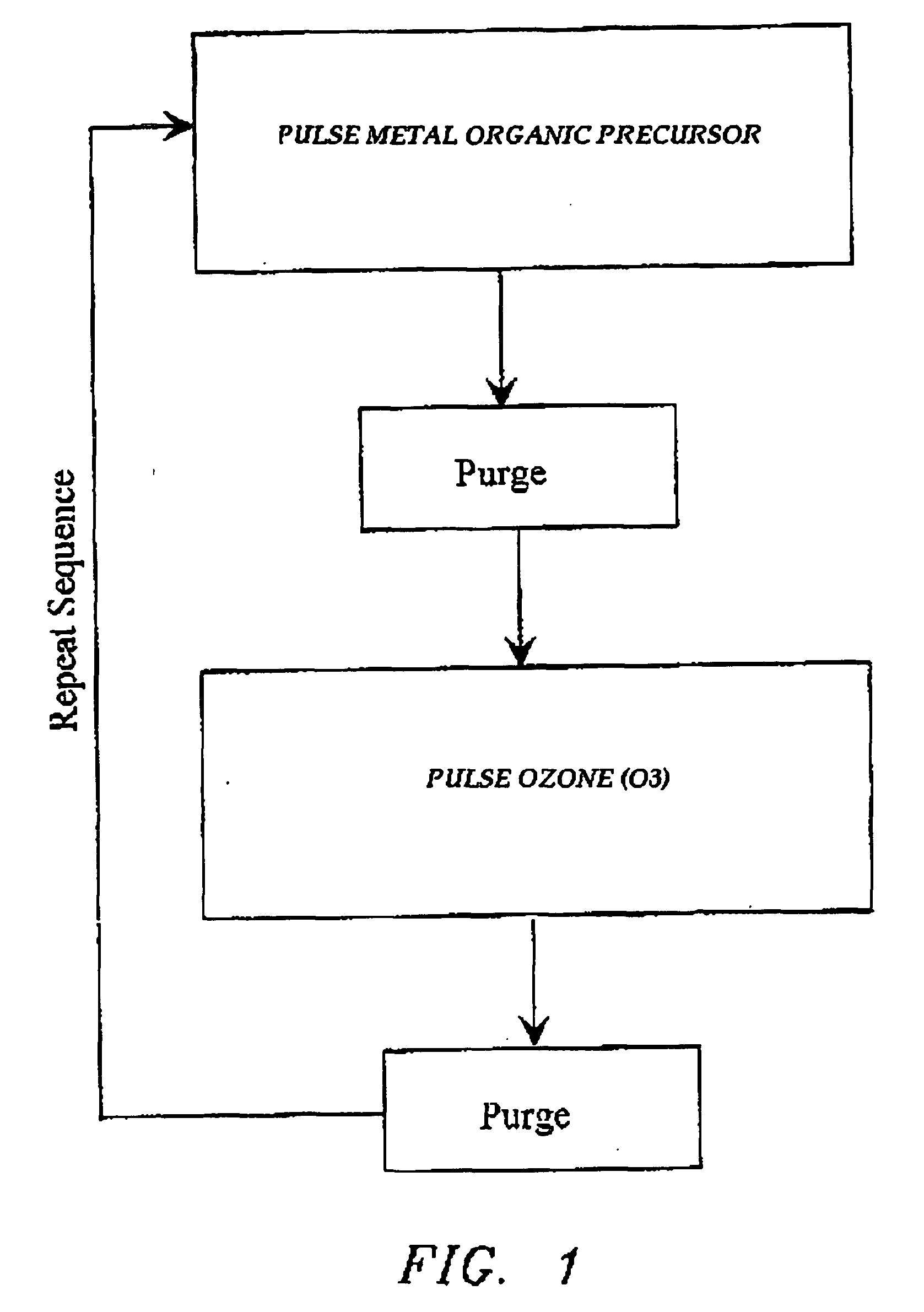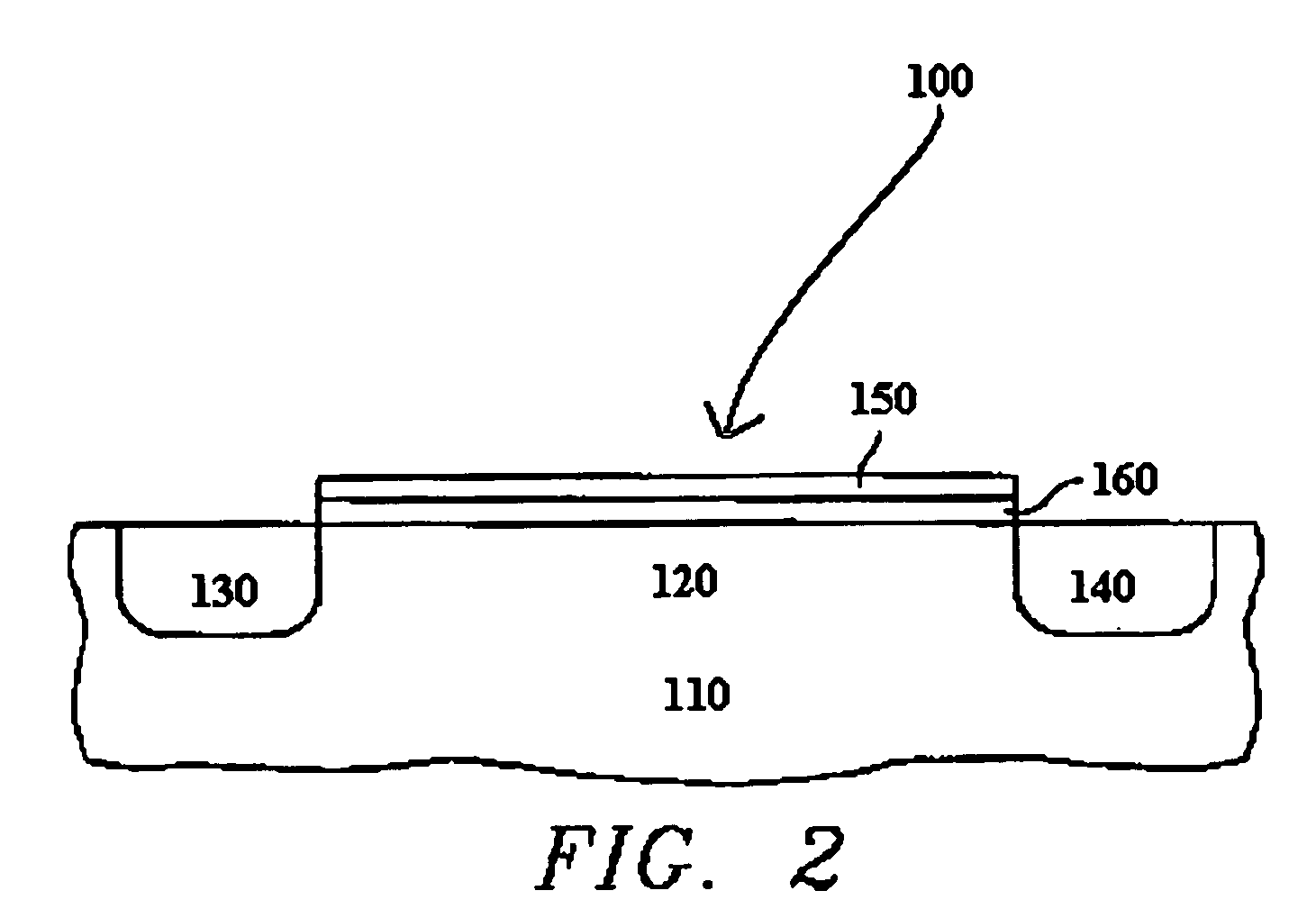Atomic layer deposition of high-k metal oxides
a metal oxide and atomic layer technology, applied in chemical vapor deposition coatings, coatings, solid-state devices, etc., can solve the problems of electron mobility degradation in mosfet performance, leakage and reliability deficiencies of conventional gate dielectrics, and the thinness of insulators, so as to achieve superior thermal stability and less interfacial silicon dioxide growth
- Summary
- Abstract
- Description
- Claims
- Application Information
AI Technical Summary
Benefits of technology
Problems solved by technology
Method used
Image
Examples
Embodiment Construction
[0018] The invention provides ALD processes for forming high k Group 4 metal oxide films to replace silicon dioxide in gate and / or capacitor dielectric applications. Such metal oxides include hafnium oxide (HfO2), zirconium oxide (ZrO2), and titanium oxide (TiO2). The most preferred metal oxide is hafnium oxide.
[0019] Prior to starting the pulse cycle, a substrate, generally a silicon wafer, is placed into a reaction chamber, often through a valve located at one end of the chamber. Preferably, the silicon wafer has been cleaned with hydrogen fluoride to remove native silicon dioxide.
[0020] The substrate sits on a heatable wafer holder that supports and heats the substrate to the desired reaction temperature. Once the substrate is properly positioned, the pulse cycle can begin.
[0021] Generally, prior to the first pulse in the pulse cycle, the wafer is heated to a temperature ranging from about 100° C. to about 500° C., and preferably ranging from about 200° C. to about 400° C. Thi...
PUM
| Property | Measurement | Unit |
|---|---|---|
| Dielectric polarization enthalpy | aaaaa | aaaaa |
Abstract
Description
Claims
Application Information
 Login to View More
Login to View More - R&D
- Intellectual Property
- Life Sciences
- Materials
- Tech Scout
- Unparalleled Data Quality
- Higher Quality Content
- 60% Fewer Hallucinations
Browse by: Latest US Patents, China's latest patents, Technical Efficacy Thesaurus, Application Domain, Technology Topic, Popular Technical Reports.
© 2025 PatSnap. All rights reserved.Legal|Privacy policy|Modern Slavery Act Transparency Statement|Sitemap|About US| Contact US: help@patsnap.com



